Artist’s toolbox: Donald Judd’s writings reveal a whole new layer of meaning to his work
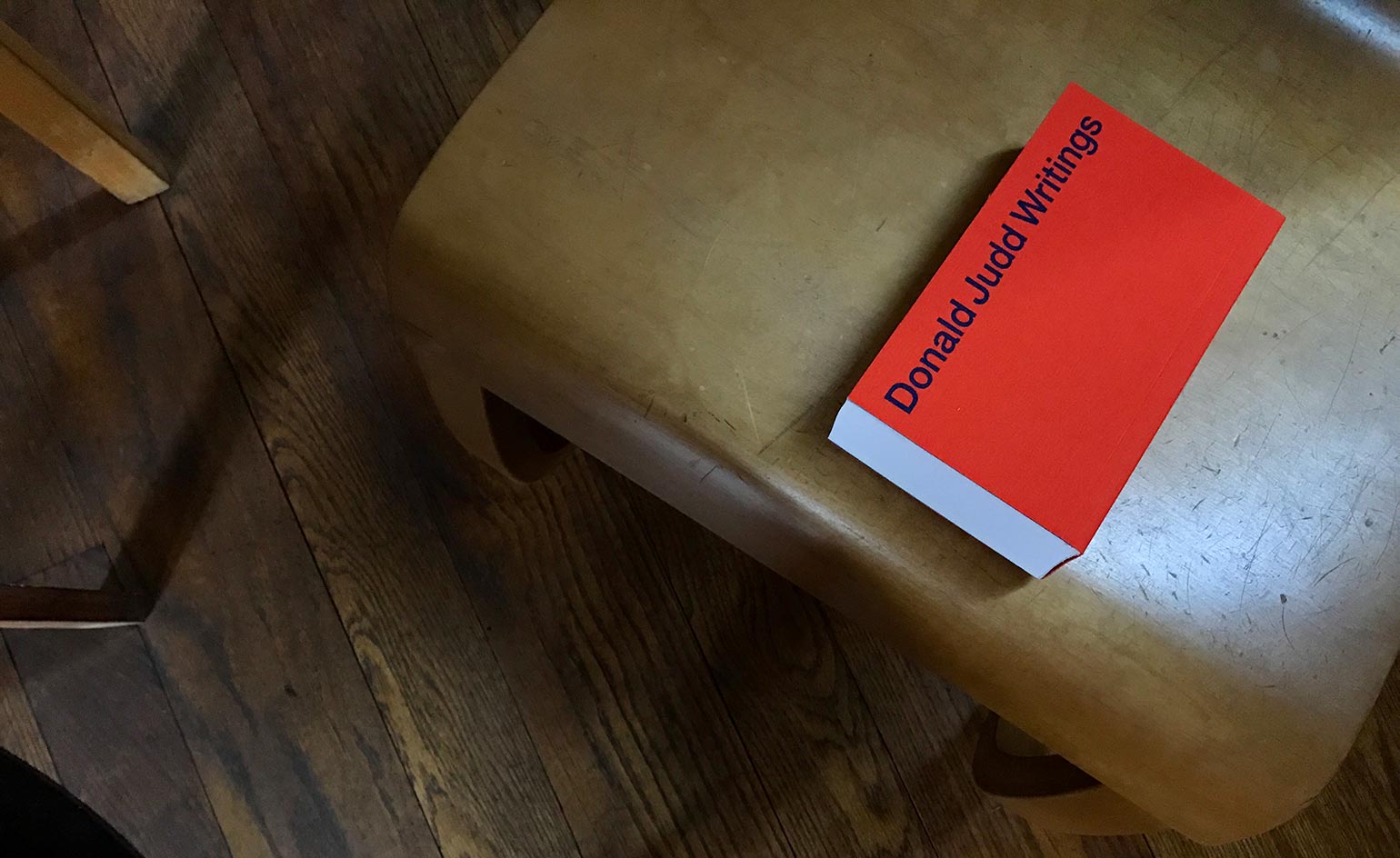
During his lifetime, Donald Judd (1928–1994) compiled four major collections of his writings. These volumes, which include his gallery reviews, book reviews, essays, articles, statements and reports have until now been considered the artist’s written work in its entirety. But a new collection, Donald Judd Writings, containing previously unpublished essays and hundreds of insightful daily notes, is now available in a beautiful cloth-bound, brick-like form. Co-published by the Judd Foundation and David Zwirner Books, it has been in design development for over two years.
Judd’s son Flavin, who oversees the artist’s legacy with his sister, Rainer Judd, worked collaboratively with Judd Foundation archivist Caitlin Murray and designer Michael Dyer, of Remake in New York, to produce the dense edition, which he refers to as ‘a toolbox’. In over 1,000 pages of Judd’s writings he hopes readers will ‘find something useful, something that can be a tool for future use. We hope that Don’s thoughts, ideas and complaints can be used by others to create.’
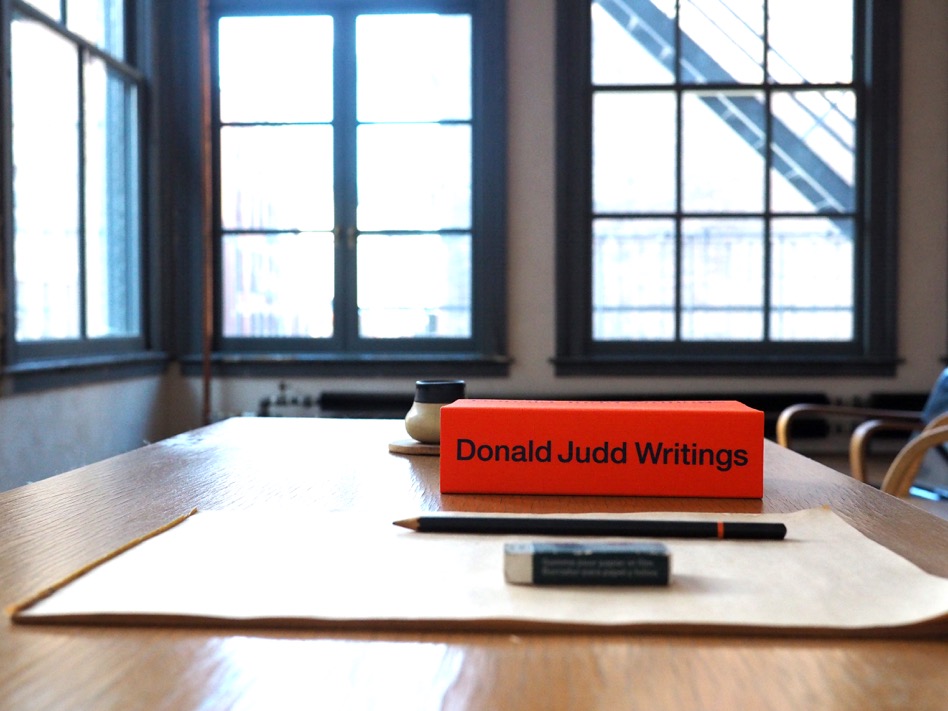
Flavin Judd captured the book in his father’s former studio and home at 101 Spring Street. © Judd Foundation
It is ordered chronologically and where appropriate notes Judd’s location at the time he was writing. ‘It was very important that it contained absolutely everything worth printing in one volume,’ says Judd, who was 25 when his father died in 1994. It is effectively a ‘verbal sketchbook’ of the artist’s life. ‘There is repetition and changes throughout,’ he adds. ‘You are able to see the transition of thought from the beginning to the end and because of its completeness it adds a whole new layer of meaning [to Don’s work].’
Since his father’s death, Judd has been back through every piece of the artist’s writing and transcribed handwritten notes (personal musings, opinions of art and literature, political views, criticisms of people and society) that he found in his journals.
‘There were some notes that seemed directly related to conversations I remember having with Don,’ he says. ‘The conversations were either pretty abstract or about history or art and they tended not to end. Rainer and I were probably the only ones who could talk completely frankly to Don and get away with it. Everyone else, employees, seemed afraid. We could ask tough questions and if you can ask tough questions it leads to long discussions.’
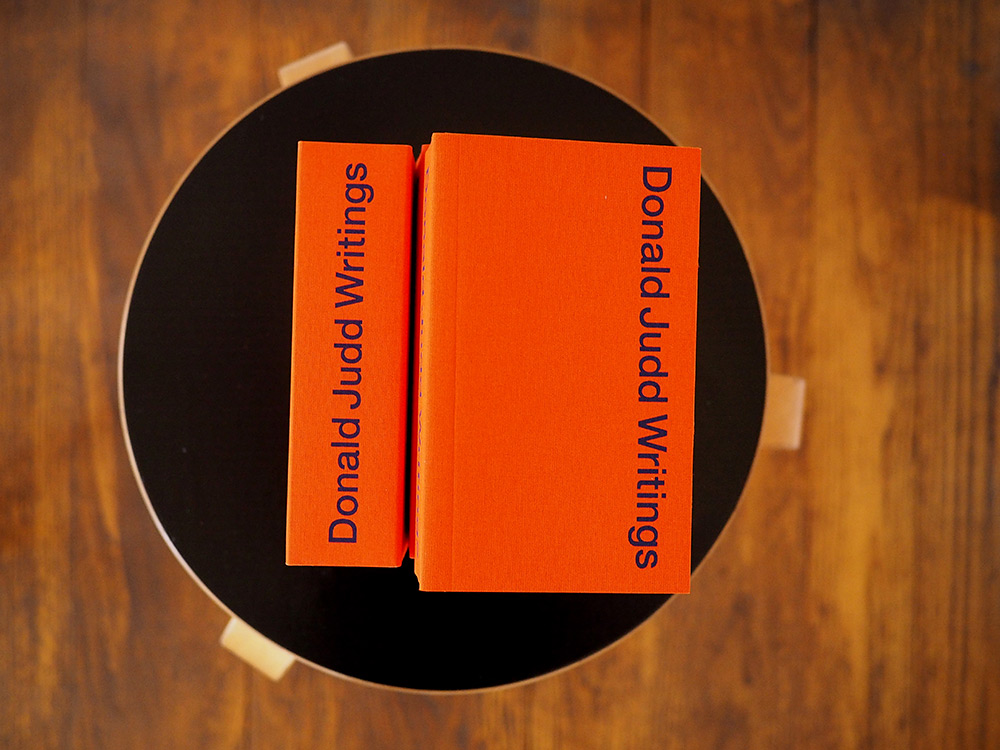
Donald Judd’s extensive writings have been compiled in a cloth-bound, brick-like tome. Photography: Flavin Judd
The process of putting the book together was arduous, with Judd sometimes spending up to eight hours deciphering one word of his father’s scrawled handwriting. ‘I have a whole page in my own sketchbook where I rewrote his words to figure out what certain things were,’ he says. But it was also a beautiful experience for Judd: ‘It’s about as close as you can get to someone again when you are with what they wrote.’
Michael Dyer first began working with Flavin and Rainer Judd on a new identity of the Judd Foundation, which was revealed prior to 101 Spring Street – the artist’s five-storey, cast-iron home and studio in New York – being opened to the public in 2013. ‘Flavin and Rainer’s combined vision is a very appropriate stewardship of Donald Judd’s legacy,’ says Dyer. ‘I feel very much the co-designer on everything we do together – the working process is highly collaborative.’
Dyer says he felt a certain weight of pressure designing the Writings book given its sheer volume, but has come to trust the unique working process he has established with Flavin and Rainer. ‘They like to try a lot of different things and you have to be comfortable with that,’ he says.
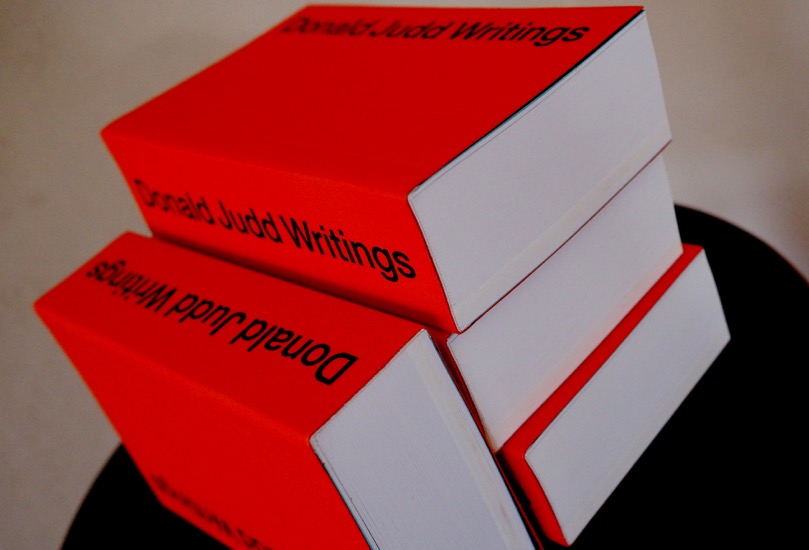
The hefty book is over 1,000 pages long. Photography: Flavin Judd
The size of the book was Judd’s idea. He admired Phaidon’s redesigned pocket edition of EH Gombrich’s The Story of Art, published in 2006. ‘I liked the way it was unpretentious, it was compact, it did what it was supposed to do and you could still carry it around,’ he says.
So Dyer was tasked with figuring out the proportions for the book so that the finished product could be a similarly small size and from there they established the brick-like form. ‘Everything else – the interior grid and the margins – was derived from the book’s proportion,’ says Dyer. ‘It looks like a simple job on the surface but required a friend in Switzerland coming up with a custom piece of code to enable me to adjust the spacing in the font [Bembo]. We had to do quite a lot of surgery for its many anomalies.’
When Dyer and Judd first discussed the project they talked about setting the book in Helvetica, which is used on most of the Judd Foundation’s materials. ‘Flavin immediately felt that setting a 1,000 page book that is virtually all text in Helvetica is a cruel and unusual form of punishment for the reader,’ says Dyer. ‘It also felt very aestheticised, not at all considered from a reader’s perspective.'
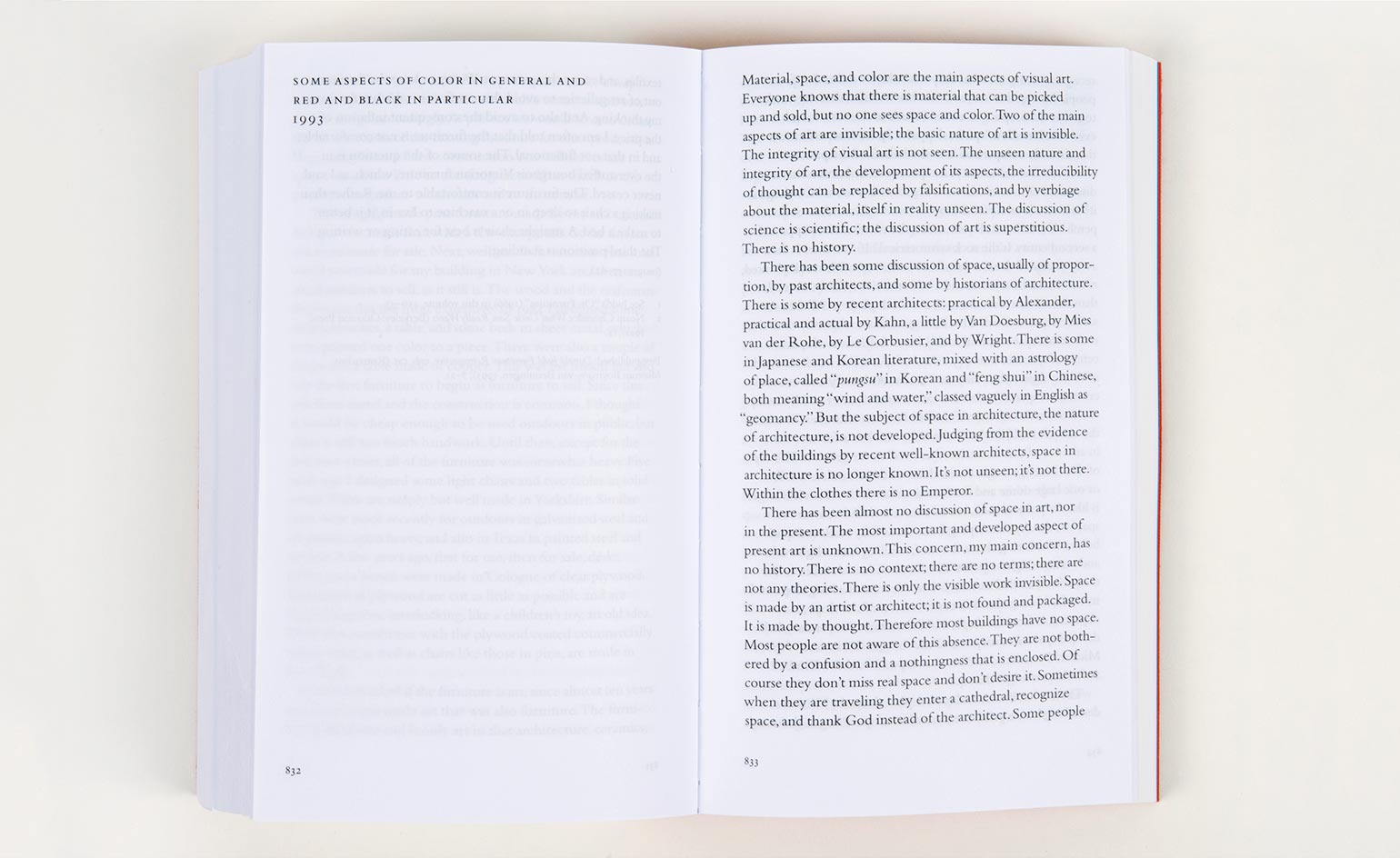
The book’s special binding allows it to be opened and laid flat without the spine creasing
‘We wanted it to be a pleasure to read,’ he adds. ‘We didn’t want the book to be self-conscious and a knowing design object.’
The simple and elegant product pushes design innovations to make it satisfying to the reader. A special binding technique was developed (for Dyer it is ‘one of the most important things about the book’) allowing the book to be opened and laid completely flat without the spine breaking or creasing. Once shut it returns to its perfect form. ‘That is my one big pride point,’ says Dyer. ‘It took a lot of prototyping to figure that out.’

A spread in the book shows Donald Judd on the second floor of 101 Spring Street, his former New York home and studio, in 1985. Courtesy of Judd Foundation, New York. © Antonio Monaci. Photography: Doris Lehni Quarella
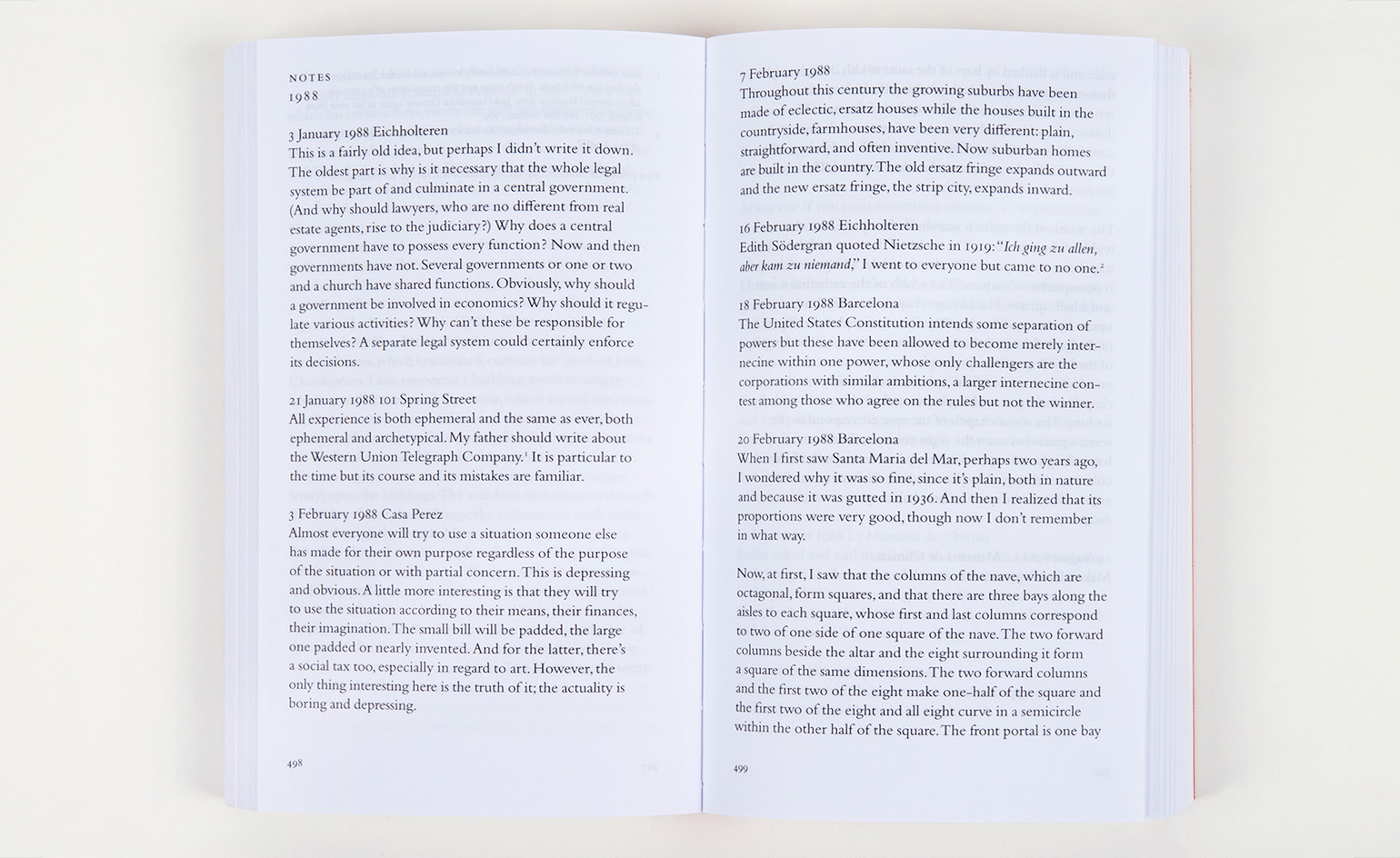
The book is ordered chronologically and where appropriate notes Judd’s location at the time he was writing
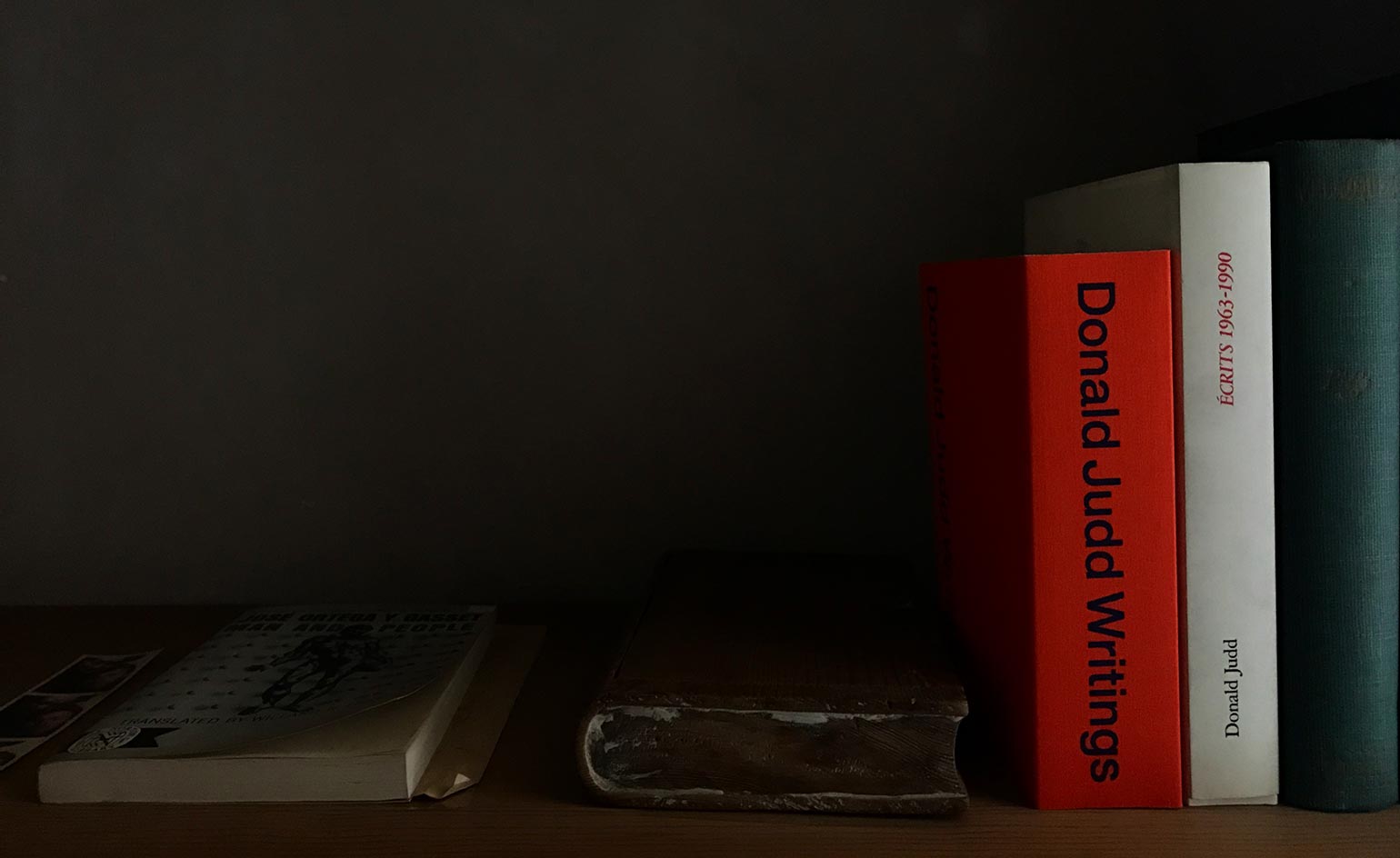
‘We didn’t want the book to be self-conscious and a knowing design object,’ explains Michael Dyer, who worked with Judd’s children, Flavin and Rainer, on the book (and previously on a new identity of the Judd Foundation). © Judd Foundation. Photography: Flavin Judd
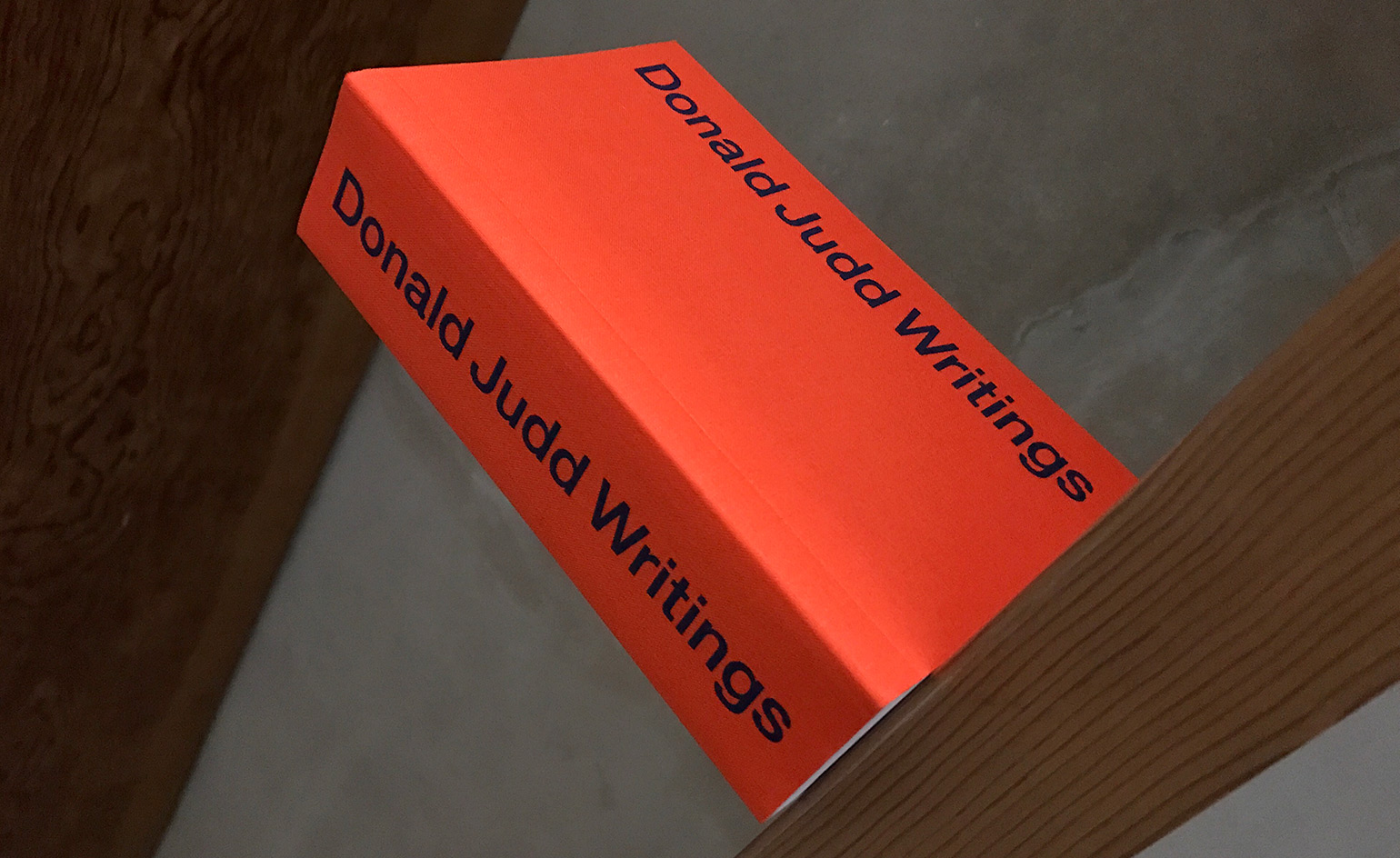
The size of the book was an homage to Phaidon’s edition of EH Gombrich’s The Story of Art. © Judd Foundation. Photography: Flavin Judd
INFORMATION
Donald Judd Writings, published by Judd Foundation and David Zwirner Books; edited by Flavin Judd and Caitlin Murray. For more information, visit the Art Book website
Wallpaper* Newsletter
Receive our daily digest of inspiration, escapism and design stories from around the world direct to your inbox.
-
 Put these emerging artists on your radar
Put these emerging artists on your radarThis crop of six new talents is poised to shake up the art world. Get to know them now
By Tianna Williams
-
 Dining at Pyrá feels like a Mediterranean kiss on both cheeks
Dining at Pyrá feels like a Mediterranean kiss on both cheeksDesigned by House of Dré, this Lonsdale Road addition dishes up an enticing fusion of Greek and Spanish cooking
By Sofia de la Cruz
-
 Creased, crumpled: S/S 2025 menswear is about clothes that have ‘lived a life’
Creased, crumpled: S/S 2025 menswear is about clothes that have ‘lived a life’The S/S 2025 menswear collections see designers embrace the creased and the crumpled, conjuring a mood of laidback languor that ran through the season – captured here by photographer Steve Harnacke and stylist Nicola Neri for Wallpaper*
By Jack Moss
-
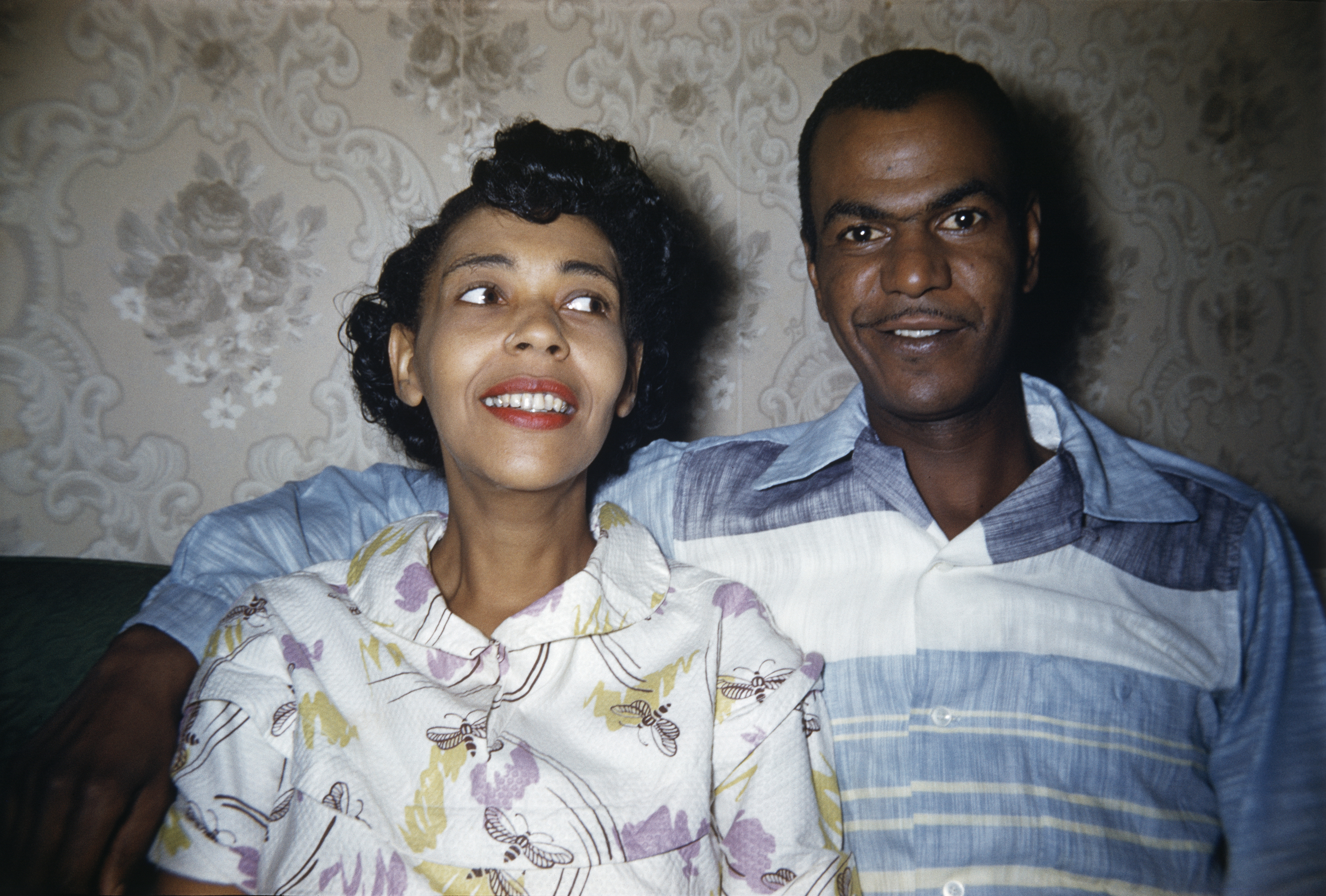 ‘Dressed to Impress’ captures the vivid world of everyday fashion in the 1950s and 1960s
‘Dressed to Impress’ captures the vivid world of everyday fashion in the 1950s and 1960sA new photography book from The Anonymous Project showcases its subjects when they’re dressed for best, posing for events and celebrations unknown
By Jonathan Bell
-
 Daniel Arsham’s new monograph collates the works of the auto-obsessed American artist
Daniel Arsham’s new monograph collates the works of the auto-obsessed American artist‘Arsham Motorsport’ is two volumes of inspiration, process and work, charting artist Daniel Arsham’s oeuvre inspired by the icons and forms of the automotive industry
By Jonathan Bell
-
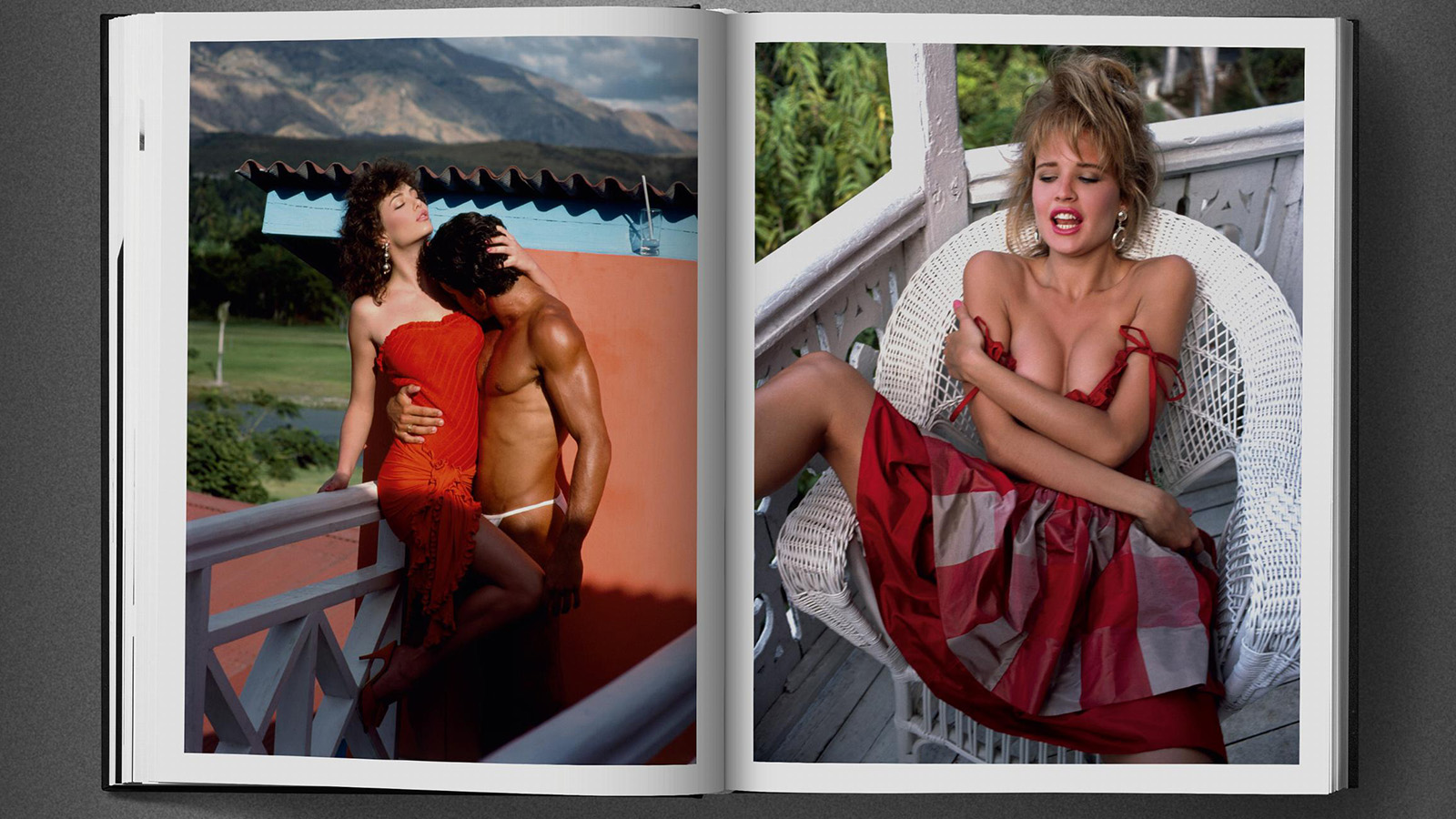 Era-defining photographer David Bailey guides us through the 1980s in a new tome not short of shoulder pads and lycra
Era-defining photographer David Bailey guides us through the 1980s in a new tome not short of shoulder pads and lycraFrom Yves Saint Laurent to Princess Diana, London photographer David Bailey dives into his 1980s archive in a new book by Taschen
By Tianna Williams
-
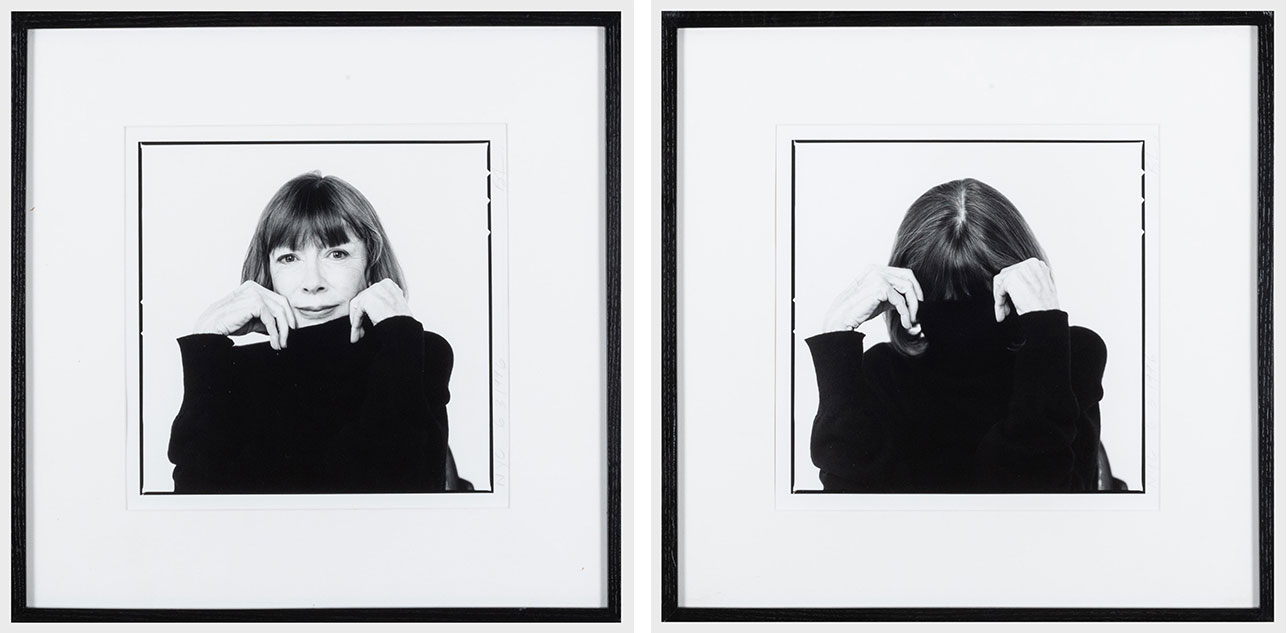 Inside Joan Didion’s unseen diary of personal relationships and post-therapy notes
Inside Joan Didion’s unseen diary of personal relationships and post-therapy notesA newly discovered diary by Joan Didion is soon to be published. Titled 'Notes to John', the journal documents her relationship with her daughter, husband, alcoholism, and depression
By Tianna Williams
-
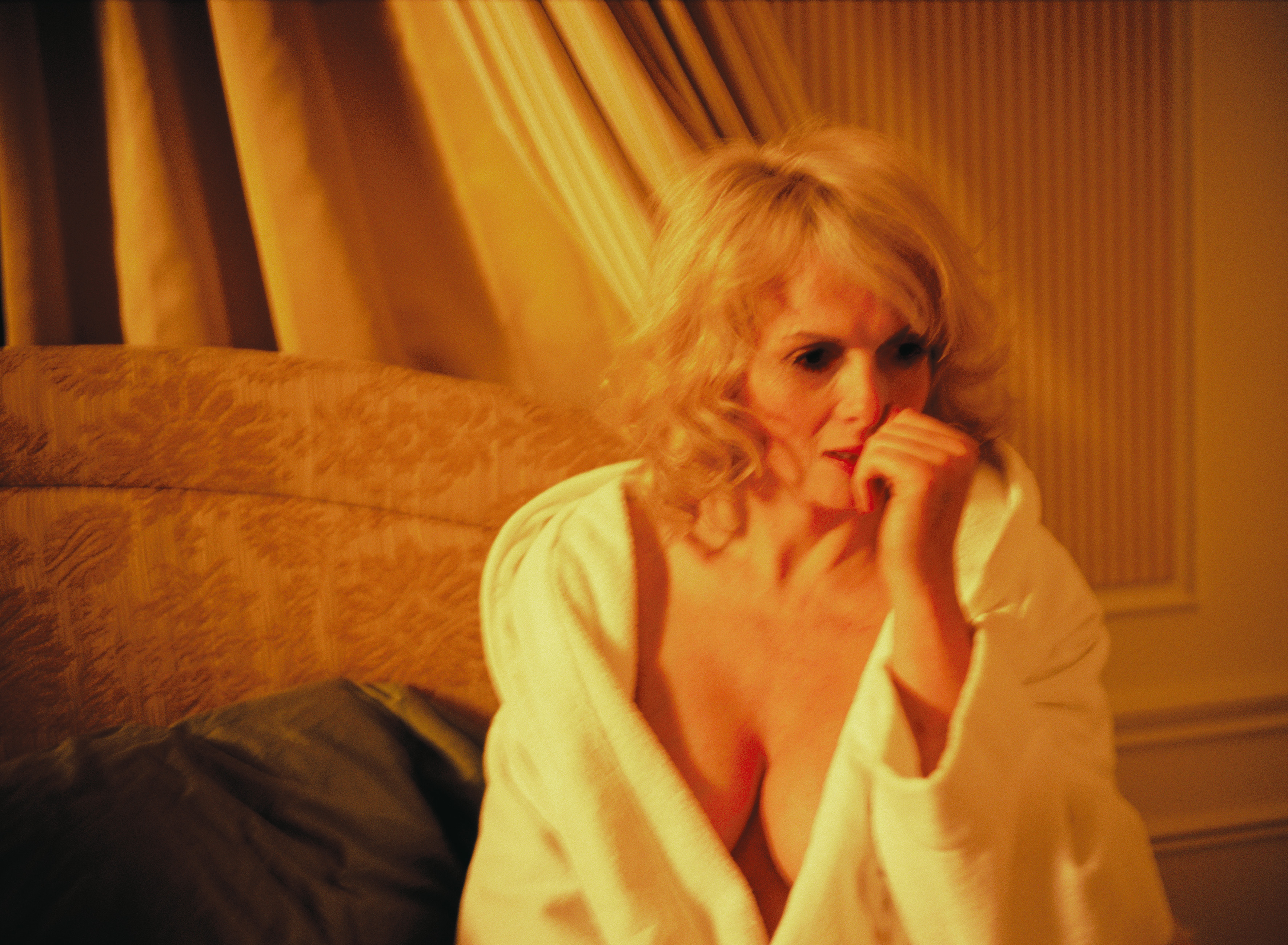 Carsten Höller’s new Book of Games: 336 playful pastimes for the bold and the bored
Carsten Höller’s new Book of Games: 336 playful pastimes for the bold and the boredArtist Carsten Höller invites readers to step out of their comfort zone with a series of subversive games
By Anne Soward
-
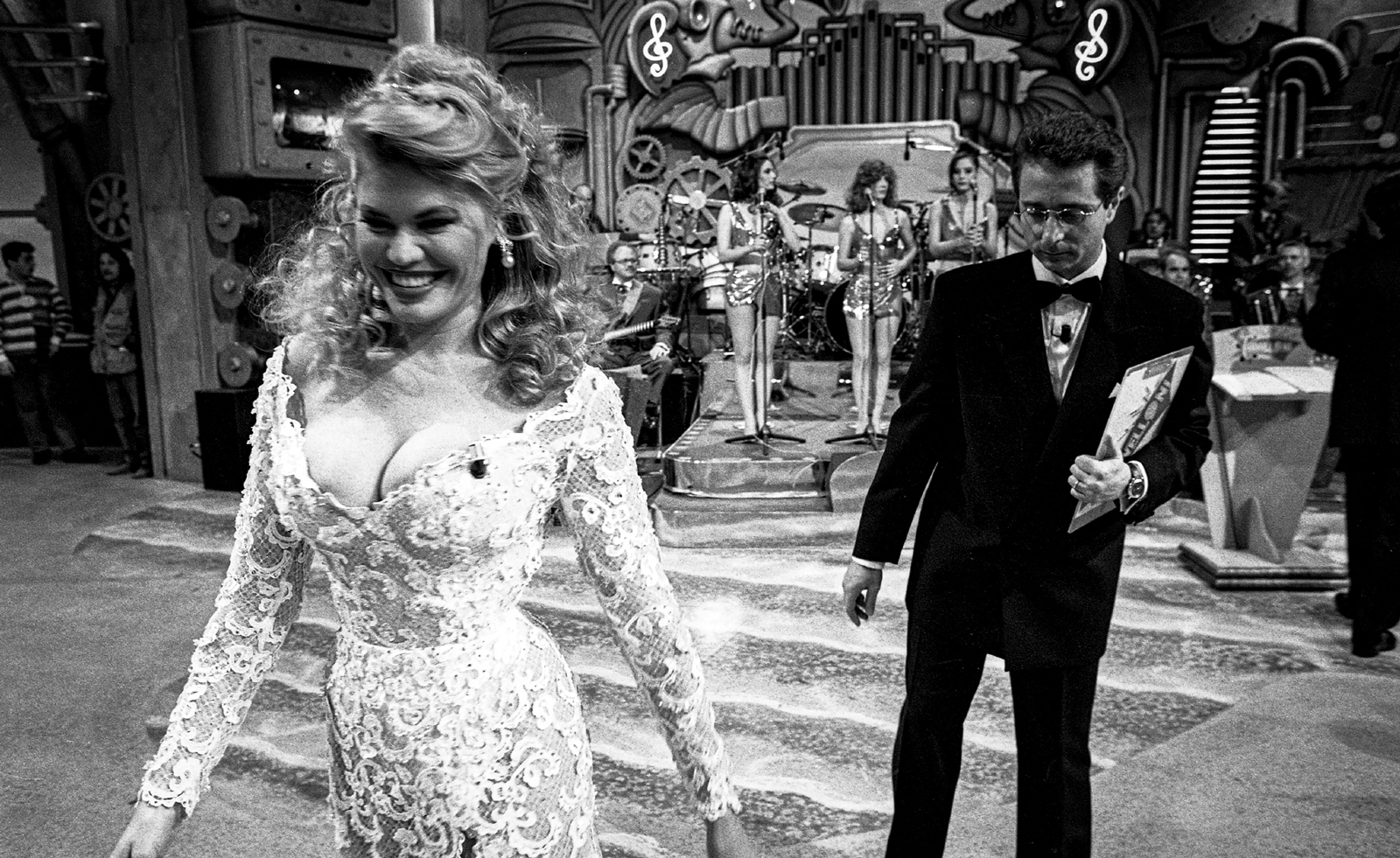 Distracting decadence: how Silvio Berlusconi’s legacy shaped Italian TV
Distracting decadence: how Silvio Berlusconi’s legacy shaped Italian TVStefano De Luigi's monograph Televisiva examines how Berlusconi’s empire reshaped Italian TV, and subsequently infiltrated the premiership
By Zoe Whitfield
-
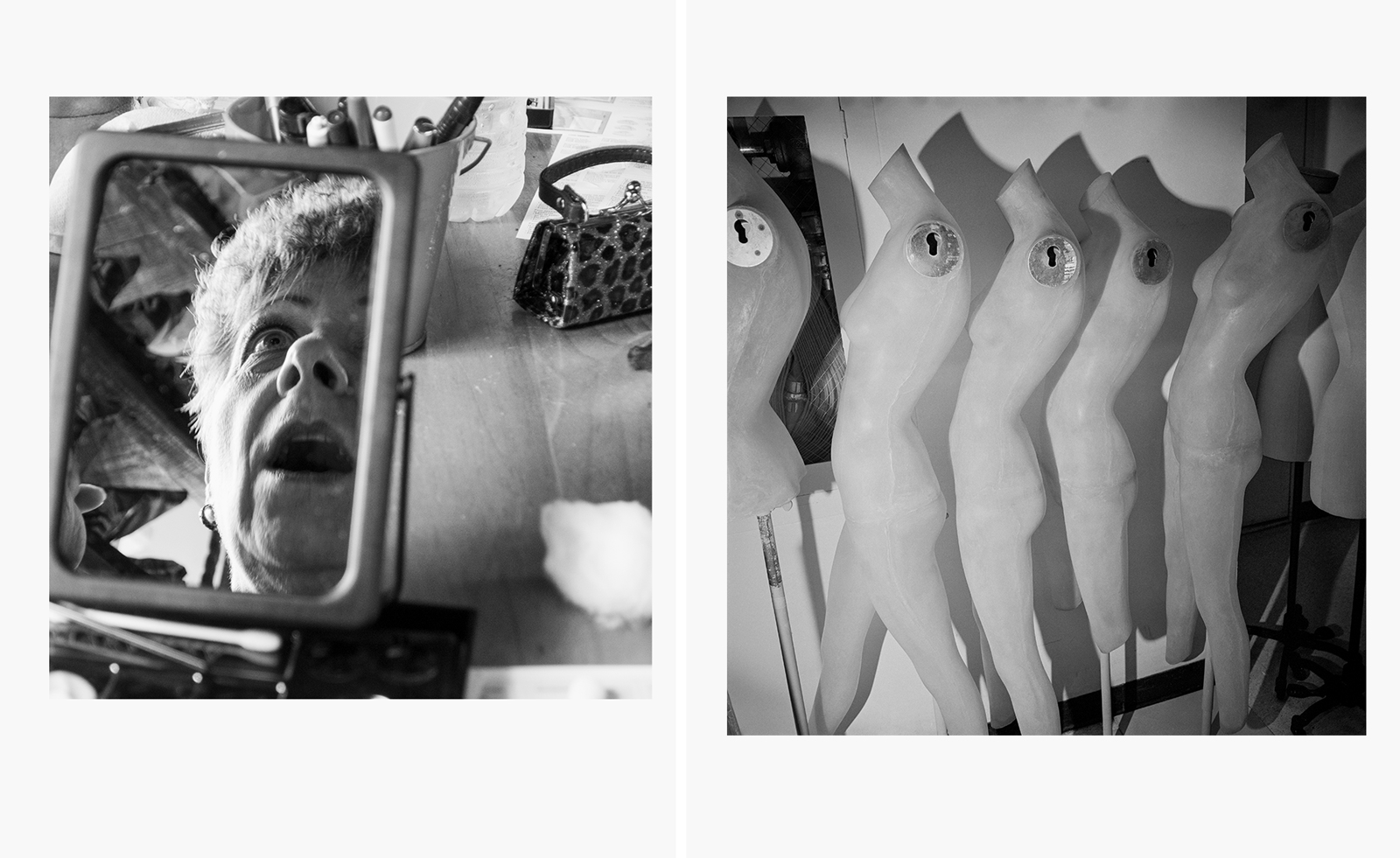 How a sprawling new book honours the legacy of cult photographer Larry Fink
How a sprawling new book honours the legacy of cult photographer Larry Fink‘Larry Fink: Hands On / A Passionate Life of Looking’ pays homage to an American master. ‘He had this ability to connect,’ says publisher Daniel Power
By Jordan Bassett
-
 New Jay-Z coffee-table book dives into the Brooklyn rapper's archives
New Jay-Z coffee-table book dives into the Brooklyn rapper's archives'Book of HOV: A Tribute to Jay-Z' is a hefty tome for a hefty talent
By Craig McLean